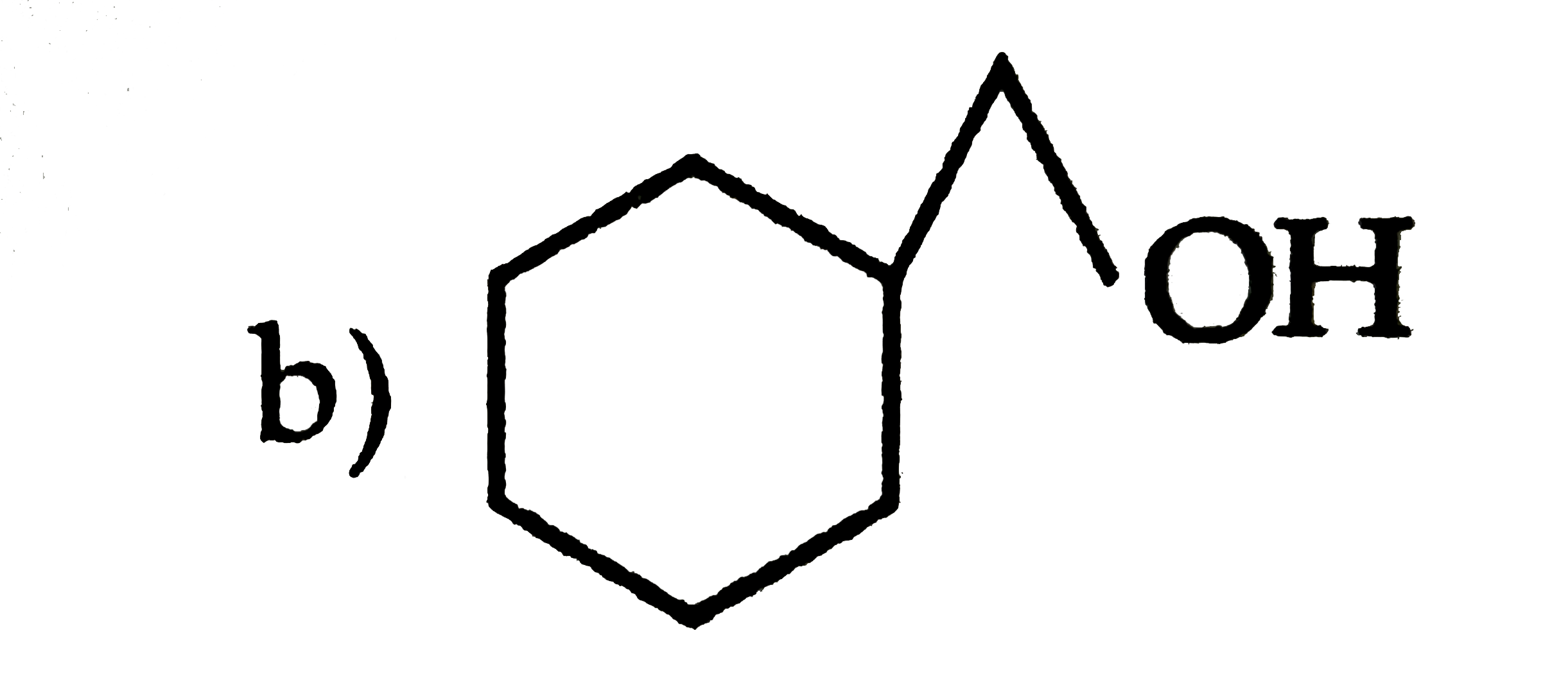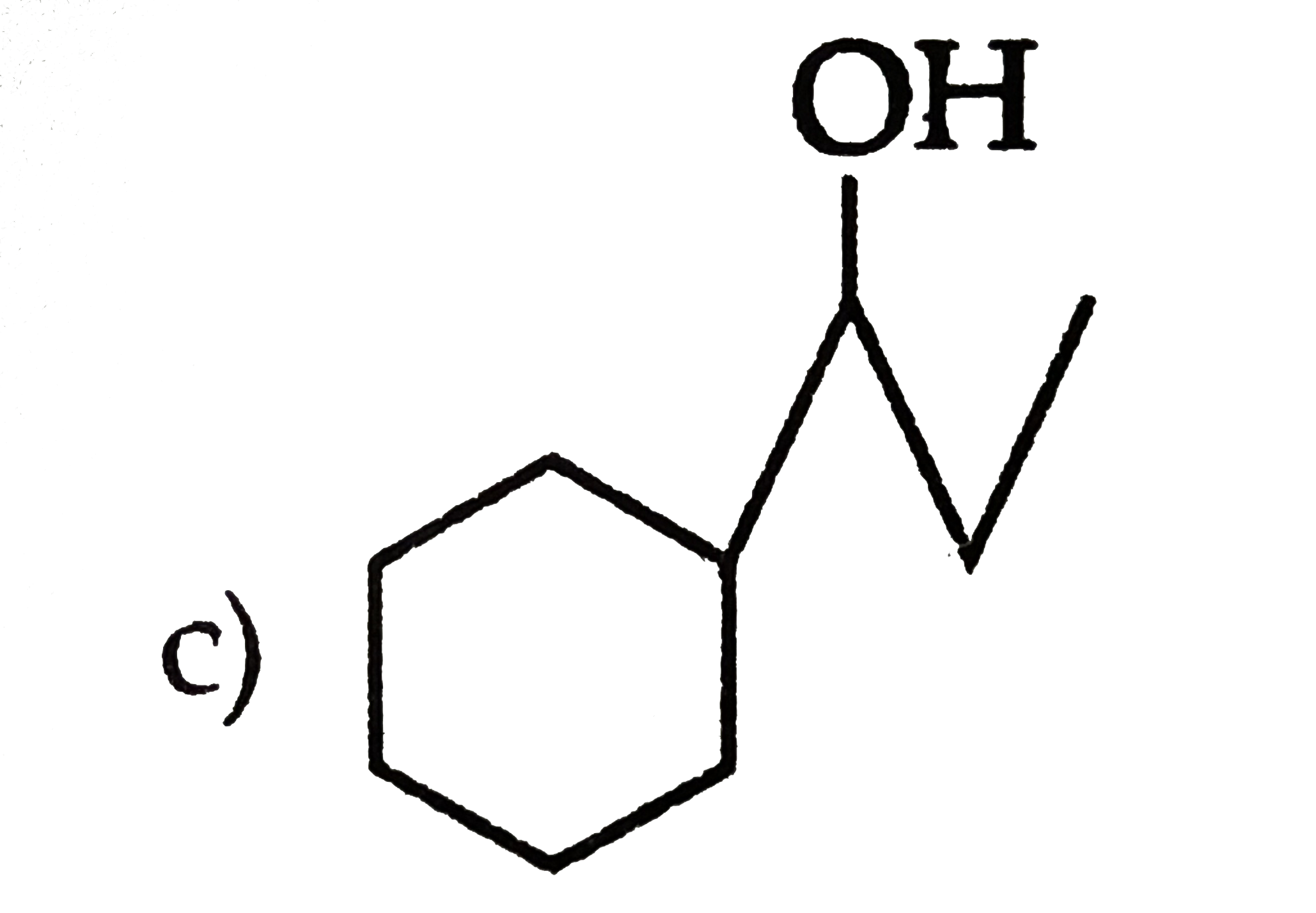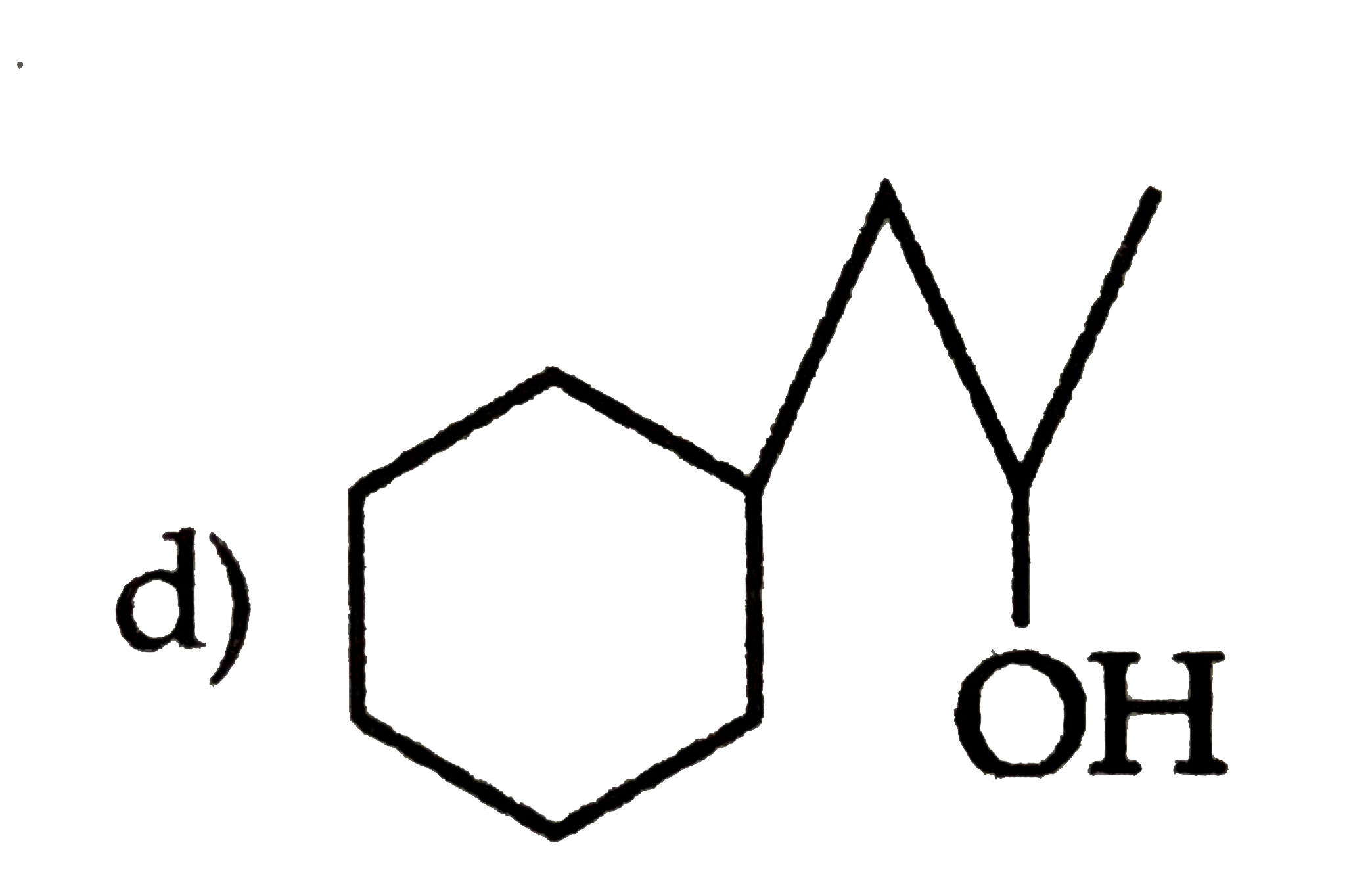An allylide on hydrolysis gives C3H4 (allylene).The alkaline earth metal cation of allylide dissolves in dry ether in presence of alkyl halide to form Grignard's reagent. The allylide is
MgBr2
Ca2C3
Mg2C3
Ba2Ca3
The correct Answer is:C
The alkaline earth metal is Mg and the allylide is Mg2C3. Mg forms RMgX a Grignard reagent with R-X (alkyl halide) in presence of dry ether.
Topper's Solved these Questions
- BOOK - DINESH PUBLICATIONCHAPTER - ALKALI EARTH METALSEXERCISE - Revision Questions From Competitive Exams.127videos
ALKALI EARTH METALS
- BOOK - DINESH PUBLICATIONCHAPTER - ALKALI EARTH METALSEXERCISE - Selected straight objective Type MCQs23videos
ALKALI EARTH METALS
- BOOK - DINESH PUBLICATIONCHAPTER - ALDEHYDES AND KETONES EXERCISE - Interger5videos
ALDEHYDES AND KETONES
- BOOK - DINESH PUBLICATIONCHAPTER - BASIC PRINCIPLES OF ORGANIC CHEMISTRYEXERCISE - Matrix Type Questions2videos
BASIC PRINCIPLES OF ORGANIC CHEMISTRY
Similar Questions
An alkyl halides (P) reacts with magnesium metal in presence of dry ether followed by treatment of ethanol gives propane. Write the structure of the alkyl halide (X).
View SolutionGrignard reagents (RMgX) are prepared by the reaction of an organic halide and magnesium metal in ether solvent.
R−X+MgR−OR−−−→R−MgX
The solvent (usually diethyl ether or tetrahydrofuran) plays a crucial role in the formation of a Grignard reagent. Alkyl halides are more reactive than art and vinyt halides, Indeed, aryl and vinyl halides. Indeed aryl and vinyl chlorides do not form Grignard reagents in dethyf other. However, an att ha de containing an alcoholic - OH group can be converted to Grignard reagent by graf protecting the - OH group to a tert-butytdimethytslyt ether which is not to Grignard reagent. The protecting group is finally liberated by treatment with lotion
R−O−H+Cl−CH3∣Si∣CH3Tert-Butylchlorodimethyilance−C(CH3)3→R−O−Si−CH3∣C∣CH3(CH3)3(C4H9)N+F−−−−−−−−−−→R−O−H+F−Si−CH3∣C∣CH3(CH3)3
H2N(CH2)3Br can't be converted into corresponding Grignard reagent becauseView Solution
Knowledge Check
- Question 1 - Select One
Phenol reacts with CCl4 in presence of aqueous alakli and forms a product which an hydrolysis gives
ASalicyladehydeBSalicylic acidCBenzaldehydeDBenzoic acid - Question 2 - Select One
Cyclohexane carbaldehyde is reacted with ethyl magnesium halide in the presence of dry ether and product on acid hydrolysis gives
A B
B C
C D
D
- Question 3 - Select One
Grignard reagents (RMgX) are prepared by the reaction of an organic halide and magnesium metal in ether solvent.
R−X+MgR−OR−−−→R−MgX
The solvent (usually diethyl ether or tetrahydrofuran) plays a crucial role in the formation of a Grignard reagent. Alkyl halides are more reactive than art and vinyt halides, Indeed, aryl and vinyl halides. Indeed aryl and vinyl chlorides do not form Grignard reagents in dethyf other. However, an att ha de containing an alcoholic - OH group can be converted to Grignard reagent by graf protecting the - OH group to a tert-butytdimethytslyt ether which is not to Grignard reagent. The protecting group is finally liberated by treatment with lotion
R−O−H+Cl−CH3∣Si∣CH3Tert-Butylchlorodimethyilance−C(CH3)3→R−O−Si−CH3∣C∣CH3(CH3)3(C4H9)N+F−−−−−−−−−−→R−O−H+F−Si−CH3∣C∣CH3(CH3)3
Griganrd reactions generally occur in dry ether becauseAthe stronger acid diethly ether will displace the weaker RH acid from its saltBthe stronger acid H2O will displace the weaker acid RH from its saltCwater slows down the reactionDwater mixes with ether preventing ether to perform its function
Grignard reagents (RMgX) are prepared by the reaction of an organic halide and magnesium metal in ether solvent.
R−X+MgR−OR−−−→R−MgX
The solvent (usually diethyl ether or tetrahydrofuran) plays a crucial role in the formation of a Grignard reagent. Alkyl halides are more reactive than art and vinyt halides, Indeed, aryl and vinyl halides. Indeed aryl and vinyl chlorides do not form Grignard reagents in dethyf other. However, an att ha de containing an alcoholic - OH group can be converted to Grignard reagent by graf protecting the - OH group to a tert-butytdimethytslyt ether which is not to Grignard reagent. The protecting group is finally liberated by treatment with lotion
R−O−H+Cl−CH3∣Si∣CH3Tert-Butylchlorodimethyilance−C(CH3)3→R−O−Si−CH3∣C∣CH3(CH3)3(C4H9)N+F−−−−−−−−−−→R−O−H+F−Si−CH3∣C∣CH3(CH3)3
The function of tetrahydrofuran in the preparation of Grignard reagent is that itView SolutionGrignard reagents (RMgX) are prepared by the reaction of an organic halide and magnesium metal in ether solvent.
R−X+MgR−OR−−−→R−MgX
The solvent (usually diethyl ether or tetrahydrofuran) plays a crucial role in the formation of a Grignard reagent. Alkyl halides are more reactive than art and vinyt halides, Indeed, aryl and vinyl halides. Indeed aryl and vinyl chlorides do not form Grignard reagents in dethyf other. However, an att ha de containing an alcoholic - OH group can be converted to Grignard reagent by graf protecting the - OH group to a tert-butytdimethytslyt ether which is not to Grignard reagent. The protecting group is finally liberated by treatment with lotion
R−O−H+Cl−CH3∣Si∣CH3Tert-Butylchlorodimethyilance−C(CH3)3→R−O−Si−CH3∣C∣CH3(CH3)3(C4H9)N+F−−−−−−−−−−→R−O−H+F−Si−CH3∣C∣CH3(CH3)3
Grignard reagent can't be prepared fromView SolutionR−X+MgEther,Δ−−−−−→δ−R−δ+Mg−X Grignard reagents may be prepared from 1∘,2∘ and 3∘ halides as well as from vinayl and aryl halide. Vicinal dihalide and those halide which contain acidic tail do not form Grignard reagent.
Which of the following halides is most reactive for the preparation of Grignard reagent?View SolutionR−X+MgEther,Δ−−−−−→δ−R−δ+Mg−X Grignard reagents may be prepared from 1∘,2∘ and 3∘ halides as well as from vinayl and aryl halide. Vicinal dihalide and those halide which contain acidic tail do not form Grignard reagent.
Which of the following compounds can form Grignard reagent on reaction with Mg//Ether?View SolutionPhenol reacts with CCI4 is presence of aqueneous alkali and forms a product which on hydrolysis gives
View Solution

